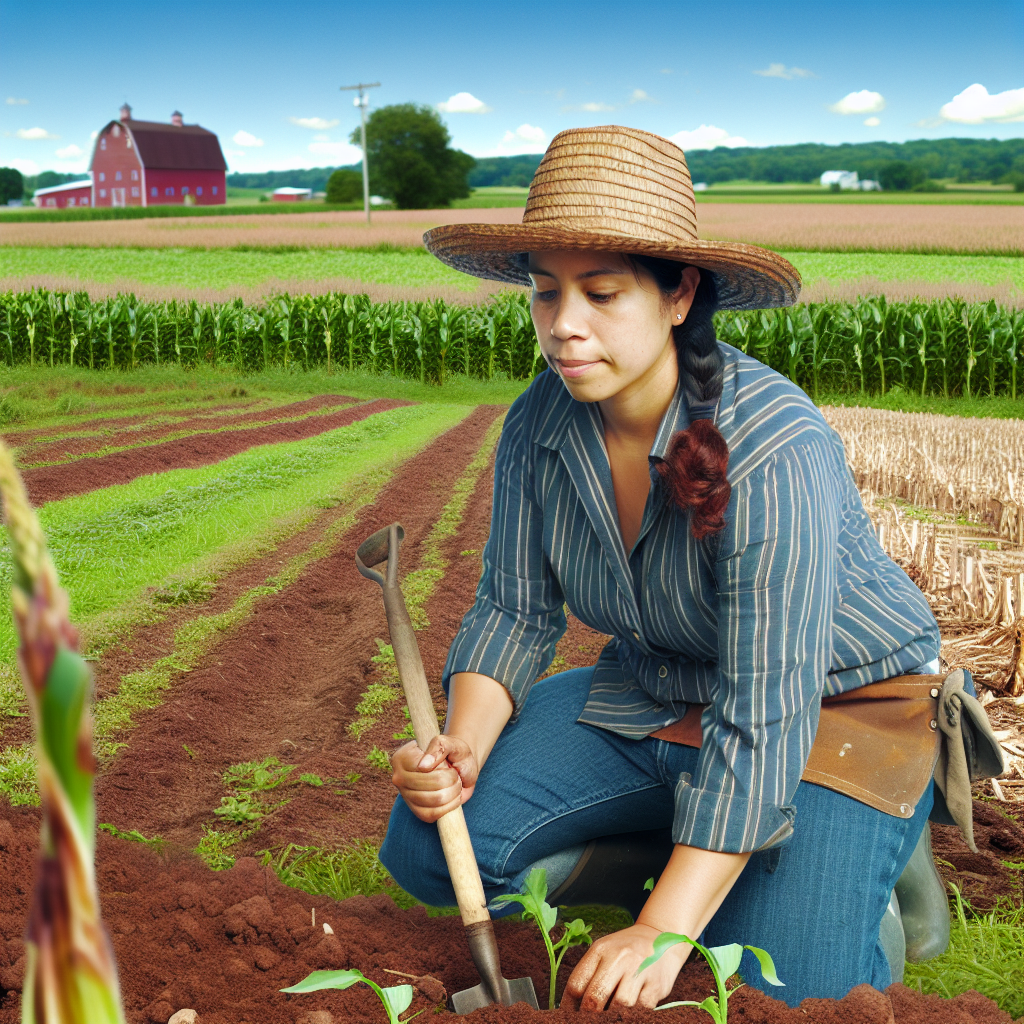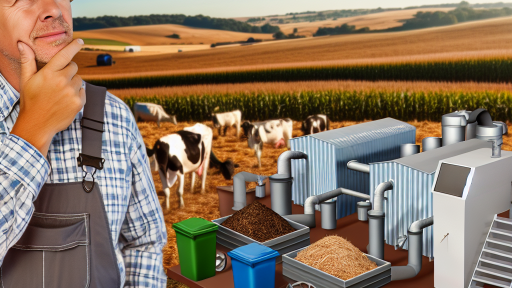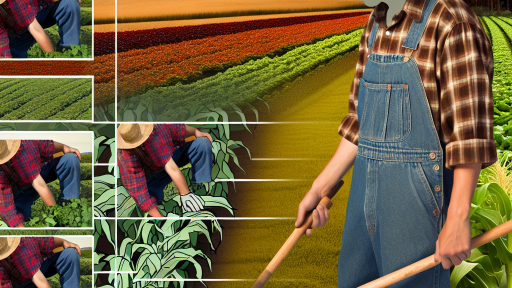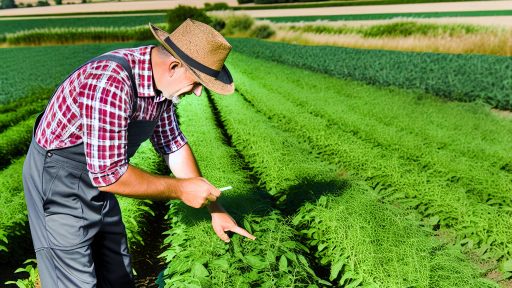Introduction to Crop Rotation
Definition of Crop Rotation
Crop rotation involves alternating the types of crops grown in a specific area over time.
This method enhances soil health and increases farm productivity.
Farmers utilize diverse plant families in sequence to disrupt pest and disease cycles.
Furthermore, rotating crops can reduce nitrogen depletion in the soil.
Importance of Crop Rotation
Crop rotation plays a crucial role in sustainable agriculture.
It promotes soil fertility by enhancing nutrient availability.
This method also improves soil structure and reduces erosion risks.
Moreover, crop rotation helps in pest and weed management, minimizing chemical inputs.
Healthy soil contributes to better yield potential in subsequent seasons.
Long-term Benefits of Crop Rotation
Implementing crop rotation creates a more resilient farming system.
This practice reduces dependency on chemical fertilizers and pesticides.
Consequently, it supports biodiversity by fostering a variety of plant species.
Additionally, it mitigates the risk of crop failure due to disease outbreaks.
Farmers who practice crop rotation often experience increased profitability.
Historical Context: Traditional Crop Rotation Practices
Origins of Crop Rotation
Farmers have practiced crop rotation for thousands of years.
Transform Your Agribusiness
Unlock your farm's potential with expert advice tailored to your needs. Get actionable steps that drive real results.
Get StartedThis method initially emerged in ancient civilizations.
Evidence from Roman agriculture indicates its early implementation.
Farmers recognized the benefits of alternating crops for soil health.
Development Through the Ages
Crop rotation evolved significantly during the Middle Ages.
Farmers began following more systematic rotation schedules.
Medieval practices included three-field systems for improved yields.
This system maximized land use and minimized soil depletion.
Renaissance Innovations
The Renaissance sparked renewed interest in agricultural science.
New theories about soil fertility emerged during this period.
Farmers started using legumes like clover and beans medicinally.
These crops restored nutrients back into the soil.
20th Century Advances
The 20th century brought remarkable agricultural innovations.
Mechanization changed how farmers approached crop rotation.
Technological advances improved efficiency in planting and harvesting.
Integrating science led to more effective crop management strategies.
Modern Practices and Sustainability
Today, crop rotation is crucial for sustainable farming.
Many farmers adopt diverse crop sequences to protect soils.
This practice reduces pests and diseases, promoting biodiversity.
Moreover, it enhances resilience to climate changes.
Benefits of Crop Rotation for Soil Health and Fertility
Improvement of Soil Structure
Crop rotation enhances soil structure significantly.
Different root systems penetrate the soil at varying depths.
This variability reduces compaction and promotes aeration.
Consequently, it enables better water infiltration and root growth.
Increased Nutrient Availability
Crop rotation minimizes nutrient depletion in the soil.
Showcase Your Farming Business
Publish your professional farming services profile on our blog for a one-time fee of $200 and reach a dedicated audience of farmers and agribusiness owners.
Publish Your ProfileDiverse crops extract different nutrients from the ground.
Some crops, like legumes, fix nitrogen into the soil.
This natural process boosts fertility and reduces fertilizer reliance.
Pest and Disease Management
Rotating crops helps mitigate pest and disease cycles.
When crops are changed, pests struggle to adapt.
This disruption leads to reduced pest populations overall.
Consequently, it lowers the need for chemical pest controls.
Enhanced Soil Biodiversity
Crop rotation promotes a diverse microbial community in the soil.
This diversity leads to improved soil health and resilience.
Bacteria and fungi perform vital roles in nutrient cycling.
Healthy soil biodiversity supports robust crop growth.
Reduction of Soil Erosion
Implementing crop rotation helps to control soil erosion effectively.
Cover crops and deep-rooted plants protect against erosion.
Additionally, they help maintain a protective soil cover.
As a result, farmers see reduced losses of topsoil.
Uncover the Details: Organic Farming Methods To Improve Soil Health
Types of Crop Rotation Methods
Continuous Crop Rotation
Continuous crop rotation involves growing the same crop repeatedly in the same field.
This method can increase yield in specific crops over time.
However, it often leads to soil degradation and pest buildup.
Farmers can mitigate these issues by incorporating cover crops.
Cover crops improve soil structure and reduce erosion.
Additionally, they can interrupt pest cycles effectively.
Sequential Crop Rotation
Sequential crop rotation alternates different crops in a planned sequence.
This method helps break pest and disease cycles effectively.
Farmers can improve soil nutrient levels by rotating deep and shallow roots.
For instance, planting legumes after grains enriches soil nitrogen.
Moreover, this method can enhance biodiversity on the farm.
Diversifying crops creates a more resilient farming system.
Adaptive Crop Rotation
Adaptive crop rotation allows farmers to modify their approach based on conditions.
This method considers factors such as weather, market demand, and soil health.
Farmers regularly assess their crop performance during the season.
Consequently, they can respond to challenges promptly.
For example, they might switch to drought-resistant varieties during dry seasons.
Ultimately, this flexibility improves overall farm sustainability.
You Might Also Like: Biodiversity’s Role In Sustainable Soil Health
Selecting Crop Combinations
Understanding Crop Compatibility
Choosing compatible crops is essential for effective rotation.
Pay attention to plants’ nutrient needs and growth habits.
This approach enhances nutrient use efficiency in the soil.
Additionally, consider the root systems of different crops.
Assessing Soil Health
Healthy soil promotes robust crop growth.
Showcase Your Farming Business
Publish your professional farming services profile on our blog for a one-time fee of $200 and reach a dedicated audience of farmers and agribusiness owners.
Publish Your ProfileConduct soil tests to determine nutrient levels and pH balance.
This data guides your crop selection process.
Furthermore, certain crops can improve soil composition significantly.
Incorporating Diverse Species
Diversity in cropping systems boosts resilience against pests.
Various species can attract beneficial insects to the farm.
Moreover, diversity helps prevent crop disease outbreaks.
Incorporate legumes to naturally fix nitrogen in the soil.
Evaluating Market Demand
Market trends influence the profitability of selected crops.
Research local consumer preferences and emerging trends.
This analysis informs your choices for crop rotation.
Focus on growing varieties that offer good returns.
Considering Climate Conditions
Climate plays a pivotal role in crop selection.
Adapting to local climate conditions optimizes yields.
Evaluate the weather patterns in your region before planting.
Choose crops that thrive under specific temperature and moisture conditions.
Planning for Pest Management
Pest management is vital for sustainable crop production.
Crop rotation interrupts pest life cycles effectively.
Consider planting crops that repel specific pests.
Integrating pest-resistant varieties can reduce chemical use.
Find Out More: Precision Irrigation Systems for Modern Farms
Crop Rotation and Pest Management
Benefits of Crop Rotation
Crop rotation plays a vital role in sustainable farming practices.
It helps to disrupt pest and disease cycles effectively.
This method encourages a diverse ecosystem on the farm.
As a result, beneficial insects flourish while harmful pests decline.
Farmers experience improved soil health through this practice.
Reducing Diseases Through Diversity
Diversity in crops can significantly reduce the incidence of diseases.
Rotating crops prevents specific pathogens from establishing dominance.
Planting various species creates a competitive environment for pests.
This competition leads to fewer outbreaks of crop-specific diseases.
Enhancing Pest Management
Crop rotation also serves as a natural pest management strategy.
By changing the crop type, farmers make it harder for pests to adapt.
This method disrupts their life cycles and feeding habits.
For instance, root-feeding pests struggle when their preferred crops are absent.
Practical Examples of Effective Rotations
Some common rotation examples include corn followed by soybeans.
This rotation delivers mutual benefits for both crops.
Another option is planting legumes next to cereals, which enriches soil nitrogen.
Farmers should consider their local ecosystem when designing rotations.
Implementation Strategies
To implement effective crop rotation, farmers should plan ahead.
They must monitor crop performance and pest populations consistently.
Keeping detailed records helps in understanding which rotations work best.
Showcase Your Farming Business
Publish your professional farming services profile on our blog for a one-time fee of $200 and reach a dedicated audience of farmers and agribusiness owners.
Publish Your ProfileFurthermore, farmers can adjust their practices based on environmental changes.
Discover More: Reducing Carbon Footprint with Sequestration in Agriculture

Economic Impact of Crop Rotation: Cost-Benefit Analysis
Understanding Crop Rotation Benefits
Crop rotation enhances soil fertility and structure.
This approach helps diversifies crop production.
Farmers can break pest and disease cycles through rotation.
Ultimately, crop rotation leads to healthier crops.
Cost Considerations
Initial costs for crop rotation can be substantial.
Farmers may need to invest in new seed varieties.
Training for staff on new practices incurs additional costs.
However, this investment often pays off in the long run.
Potential Savings from Reduced Inputs
By rotating crops, farmers can reduce chemical inputs.
This strategy minimizes the need for fertilizers and pesticides.
As a result, overall operational costs decrease significantly.
Increased Yields and Revenue
Crop rotation often leads to increased yields.
Higher yields translate to greater revenue for farmers.
Farmers can also access premium markets with diverse crops.
This diversification enhances financial stability.
Long-Term Sustainability Gains
Sustainable practices strengthen long-term farmland productivity.
Healthy soils support future crop generations effectively.
Moreover, these practices can boost local economies.
Measuring Economic Impact
Farmers can use metrics to measure crop rotation’s success.
Tracking changes in yield and input costs is essential.
Economic modeling can project future benefits as well.
Ultimately, ongoing assessment helps refine practices for profitability.
Case Studies: Successful Crop Rotation Practices in Sustainable Farming
Implementation of Diverse Crop Rotations
Diverse crop rotations enhance soil health effectively.
Farmers like Emily Hart have succeeded with multi-crop systems.
They rotate legumes with cereals to improve nitrogen levels.
This method also reduces pest and disease outbreaks significantly.
Utilizing Cover Crops
Cover crops serve multiple benefits in sustainable practices.
For instance, James Price employs clover and vetch as covers.
These crops prevent soil erosion during off-seasons.
Additionally, they improve organic matter in the soil.
Integrating Livestock into Crop Rotation
Integrating livestock can enhance crop production sustainably.
Farmers such as Lisa Morales rotate cattle with crops.
This practice helps to naturally fertilize the fields.
Furthermore, it efficiently manages weeds in the process.
Success Stories from Local Co-ops
Local cooperatives have standardized crop rotation practices.
The Green Valley Cooperative has implemented a four-field system.
They alternate between corn, soybeans, small grains, and pasture.
This method has led to increased yields and healthier soils.
Showcase Your Farming Business
Publish your professional farming services profile on our blog for a one-time fee of $200 and reach a dedicated audience of farmers and agribusiness owners.
Publish Your ProfileAdoption of Technology in Crop Rotation
Technology enhances monitoring and planning in crop rotation.
Farmers like Ben Roberts use software for crop management.
This allows precise tracking of crop performance and soil health.
Consequently, they can make data-driven decisions for future rotations.
Challenges and Solutions
Farmers face challenges in adopting crop rotation methods.
Initial investments in tools and seeds can be significant.
However, long-term benefits outweigh these initial costs.
Educational resources can also facilitate smoother transitions.
Challenges and Limitations of Implementing Crop Rotation
Understanding the Complexity of Soil Health
Implementing crop rotation requires a deep understanding of soil health.
Farmers often struggle to assess the nutrient needs of their soil.
This complexity may lead to improper crop choice and rotation planning.
Additionally, soil health varies significantly across different regions.
As a result, specific practices that work in one area might fail in another.
Costs and Resource Allocation
Transitioning to a crop rotation system incurs upfront costs.
Farmers may need to invest in new equipment or technologies.
Moreover, labor resources might be stretched during this transition.
Many farmers operate on tight budgets, making financial strain a concern.
Consequently, farmers must carefully weigh costs against potential benefits.
Knowledge Gaps and Farmer Education
A lack of knowledge about effective crop rotation methods exists among many farmers.
Farmers may not be aware of the specific benefits of diverse crops.
This knowledge gap can lead to resistance against implementing crop rotation.
Effective education programs are necessary to bridge this gap.
Furthermore, continuous support and resources can help farmers adapt better.
Pest and Disease Management
Crop rotation aims to disrupt pest and disease cycles.
However, some farmers may experience new pest issues with different crops.
This shift can create uncertainty and fear about crop yields.
Effective pest management strategies must be integrated into rotation plans.
Failing to do so may negate the benefits of crop rotation entirely.
Market Demand and Economic Considerations
Market demand plays a significant role in crop choice and rotation.
Farmers often prioritize crops that generate higher profits.
This focus may discourage the adoption of diverse rotation systems.
Consequently, economic pressures can hinder sustainable practices.
Farmers must balance profitability with the need for sustainability.
Future Trends in Crop Rotation
Innovative Crop Rotation Techniques
Farmers are adopting innovative crop rotation techniques to enhance sustainability.
Integrating cover crops can significantly reduce soil erosion.
Moreover, these crops improve soil health by increasing organic matter.
Additionally, farmers are exploring intercropping strategies to optimize land use.
Intercropping promotes biodiversity and can reduce pest outbreaks.
Technological Advancements in Agriculture
Technology is revolutionizing crop rotation methods in agriculture.
Farm management software now aids in planning and monitoring rotations.
Showcase Your Farming Business
Publish your professional farming services profile on our blog for a one-time fee of $200 and reach a dedicated audience of farmers and agribusiness owners.
Publish Your ProfileThese tools help track soil health and crop performance over time.
Furthermore, precision agriculture techniques enhance resource efficiency.
Drones provide real-time data for assessing crop health and conditions.
Adoption of Data-Driven Practices
Data-driven practices are becoming increasingly important in crop rotation.
Analytics software can predict the best crops to plant based on various factors.
This approach maximizes yields while minimizing negative environmental impacts.
Farmers are using sensors to monitor soil moisture levels continuously.
This information supports timely decision-making for irrigation and planting.
Collaborative Farming Initiatives
Collaboration among farmers enhances the effectiveness of crop rotation.
Sharing resources and knowledge leads to better crop diversity.
Community-supported agriculture programs promote local produce consumption.
Additionally, collaborative projects can access funding for sustainable practices.
Such initiatives foster a sense of community among farmers.




